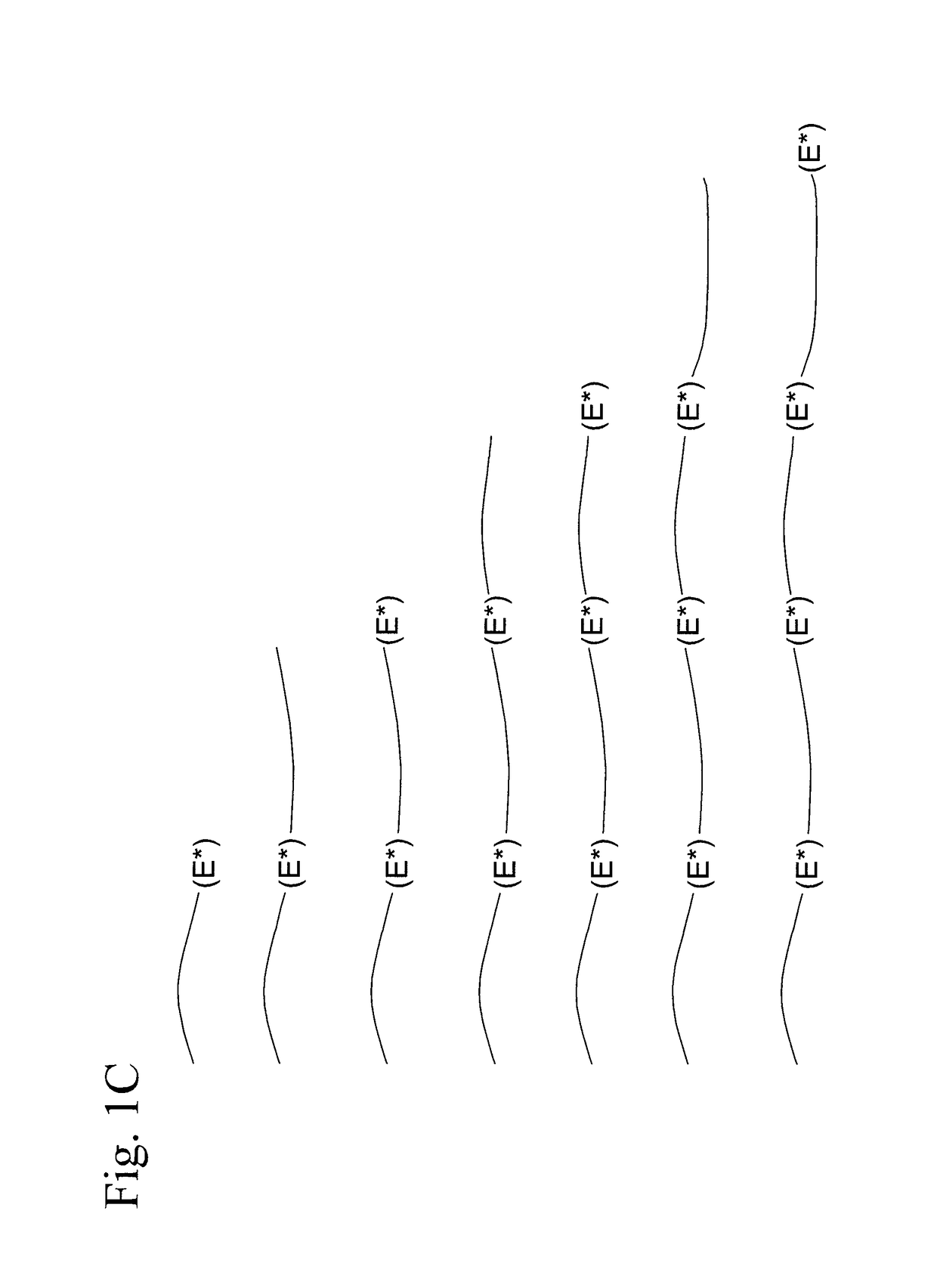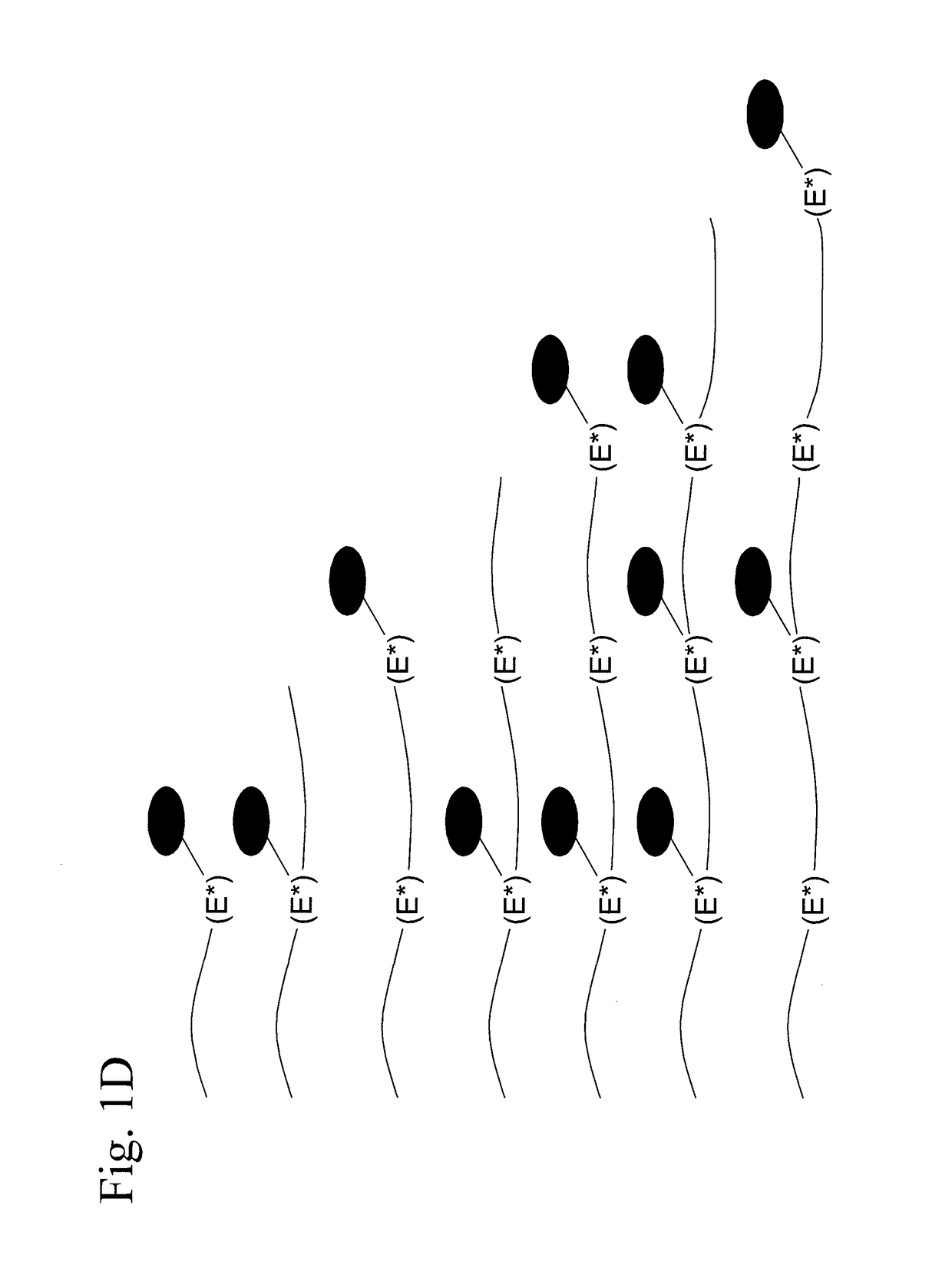Omega-functionalized polymers, junction-functionalized block copolymers, polymer bioconjugates, and radical chain extension polymerization
a technology of junction-functionalized block copolymer and omega, which is applied in the field of omega-functionalized polymers, junction-functionalized block copolymers, polymer bioconjugates, and radical chain extension polymerization, can solve the problems of limiting the flexibility of the polymer architecture, limiting the general knowledge approach for preparing end-functional raft polymers, and preventing further cta-mediated radical polymerization. achieve the effect o
- Summary
- Abstract
- Description
- Claims
- Application Information
AI Technical Summary
Benefits of technology
Problems solved by technology
Method used
Image
Examples
example 1
Synthesis of Polymer Chains using RAFT Polymerization
example 1a
Synthesis of poly(N,N-dimethylaminoethyl methacrylate) (polyDMAEMA)
[0550]The polymer chain poly(DMAEMA) was obtained by RAFT polymerization using experimental conditions appropriate to target the various molecular weights used in this study. As an example of typical conditions, the [CTAo] / [Io] ratio was 10:1, the [CTAo] / [Mo] ratio was 1:150, and the monomer was 50 wt % in N,N′-dimethylformamide (DMF). The polymerization was conducted at 60° C. for 7 hours. The molecular weight and polydispersity were 8,100 g / mol and 1.21 respectively. All DMAEMA polymers were isolated by precipitation in an 80 / 20 v / v pentane / ether mixture, followed by repeated cycles of dissolution in ether and precipitation in pentane. The polymer was dried under vacuum overnight. Molecular weights distributions were determined by gel permeation chromatography (GPC).
example 1b
Synthesis of poly(DMAMEA)-b-DMAEMA / PAA / BMA Block Copolymer
[0551]The block copolymer p(DMAMEA-b-DMAEMA / BMA / PAA) was prepared following previously described protocols (41). Briefly, a pDMAEMA macro CTA (Mn=9,000 g / mol, MW / Mn=1.30) was employed for the polymerization of the copolymer block using a [CTAo] / [Io] ratio of 10:1 and a [CTAn] / [Mo] ratio of 1:250 in DMF at 40 wt % monomer. The composition of the feed was 40 mol % butylmethacrylate (BMA), 30 mol % propylacrylic acid (PAA) and 30 mol % DMAEMA. 2,2′-azobis(4-methoxy-2,4-dimethylvaleronitrile) (V70) was the radical source, and the polymerization time was 18 hours at 30° C. The block copolymer was isolated by multiple precipitations in an 80 / 20 v / v pentane and ether mixture, followed by precipitation in pentane.
PUM
| Property | Measurement | Unit |
|---|---|---|
| polydispersity index | aaaaa | aaaaa |
| polydispersity index | aaaaa | aaaaa |
| Tc | aaaaa | aaaaa |
Abstract
Description
Claims
Application Information
 Login to View More
Login to View More - R&D
- Intellectual Property
- Life Sciences
- Materials
- Tech Scout
- Unparalleled Data Quality
- Higher Quality Content
- 60% Fewer Hallucinations
Browse by: Latest US Patents, China's latest patents, Technical Efficacy Thesaurus, Application Domain, Technology Topic, Popular Technical Reports.
© 2025 PatSnap. All rights reserved.Legal|Privacy policy|Modern Slavery Act Transparency Statement|Sitemap|About US| Contact US: help@patsnap.com



